My love affair with Shetland began far away, on another set of islands altogether – Scilly, to be precise, where I have enjoyed near-annual autumn pilgrimages since the late 1980s. On 23 October 2013, four days into my week on St Marys, news broke of a Cape May Warbler on Shetland. I enjoyed the rest of my time on Scilly that year but kept half an eye on news from the northern archipelago. On 28 October I decided to visit for the first time, specifically to an island I’d never heard of before: Unst. The twitch was a success and the island had grabbed my attention.
Over the next few years I would return to Unst more, with a view to an eventual permanent move. In 2016, my wife had secured a role at the local school and the move looked on. However, at the eleventh hour, the position fell through and the move sadly for us never happened. We’d already bought a house – Bordanoost Lodge – and decided to develop it into a self-catering let. I return every spring and autumn and, despite being a part-time Unst ‘resident’, I’m always made very welcome, not least by Messrs. Brookes, Cooper and Thomason who themselves have great track records of finding megas.
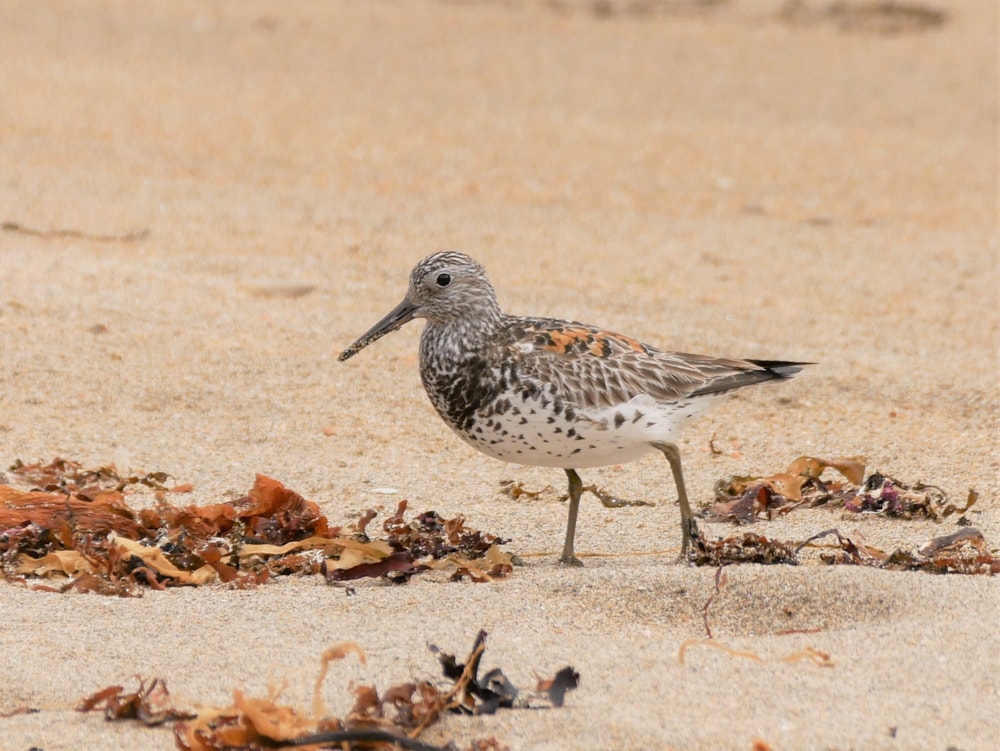
Pending acceptance, the Great Knot will represent only the sixth British record and first since a popular bird in north Norfolk during summer 2016 (Allan Conlin).
Reluctantly, I was forced to pull out of my spring visit this year due to historical spinal issues causing continued back pain. Fellow Wirral birder and pal David Haigh said he’d take on the house for the last week of May but, as his departure date approached, I realized the pain of him finding something good in my garden would be far greater than any physical pain – I re-booked my flight.
So, I touched down in Lerwick on 24 May, with gritted teeth and armed with more drugs than a South American cartel in my hand luggage. I slumped to the car and we were off but, despite our best efforts, the omens weren’t good – within the space of two hours we’d successfully managed to dip Golden Oriole, Lesser Yellowlegs and Thrush Nightingale, the latter of which had vanished overnight. After collecting provisions at the supermarket, we headed north to Unst, where we faired a little better, seeing Green-winged Teal and Icterine Warbler.
However, what followed was a week of useless winds originating principally from the north or northwest. It was a grueling week of birding with some days producing no migrants. The only solace came in the form of the odd Otter from the house and a Little Egret (still a good bird on Unst). I’d spent weeks boring Dave with tales of Unst, that spring was ace and shrikes and Bluethroats would be dripping from every branch … it wasn’t to be, though, and I lost count of how many times I must have said “it only takes one bird” or “the big one travels alone. However, the winds were wrong and it seemed no amount of positive talking was going to turn things around.
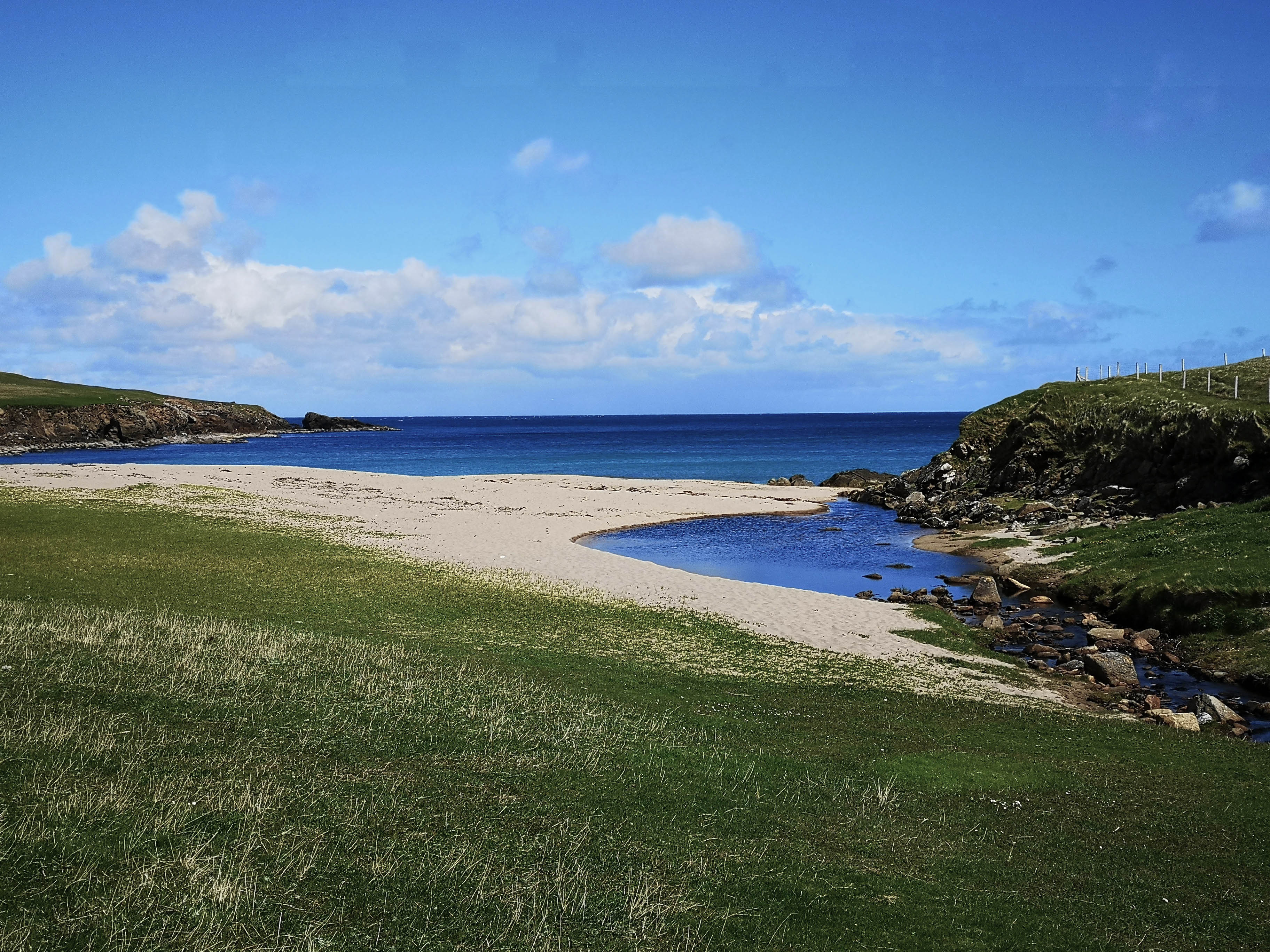
The picturesque beach at Skaw, on Unst, was the setting for Allan’s discovery on 30 May. The bird lingered until June 4, often showing superbly (Allan Conlin).
By the penultimate day the cumulative pain of bad backs, lack of birds, too much walking and having over promised and under delivered was beginning to take its toll. Having completed another fruitless circuit of Haroldswick we were looking for somewhere to go that didn’t involve a hill, barbed wire hurdle or jumping ditches – we opted for Skaw, a site with a great track record of rarities.
On approaching the golden sands of Skaw beach, I remembered I needed to make some work calls and, despite being one of the more remote locations on Unst, it just happens to be one of the few places where mobile reception is good. Having peeled away from Dave, I was mid conversation during one of my long calls when I noticed a medium-sized wader coming in off the sea. With the naked eye I felt it was somehow different – I’m not sure why or how, but instinct just told me it was unusual.
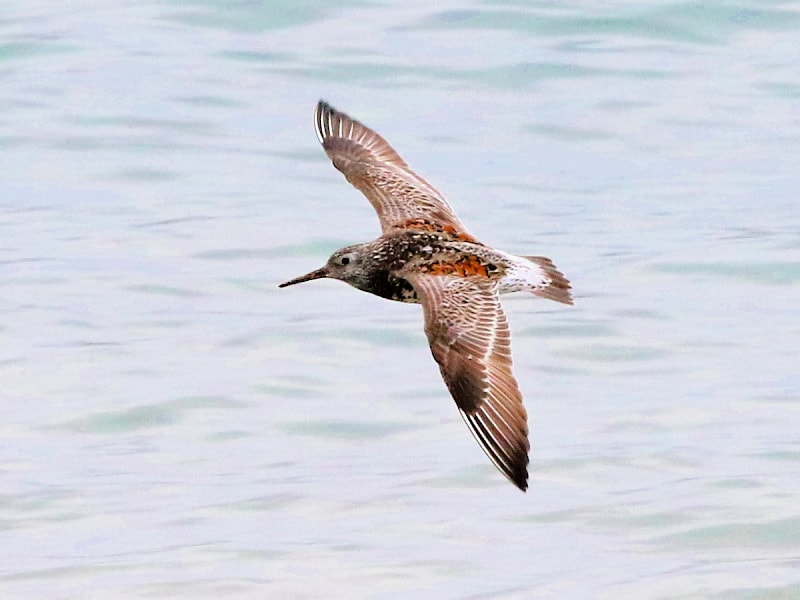
The mega Asian wader flew in off the sea before landed on the shore, not far from Allan (David Cooper).
As it continued to head inshore the largish size and long, rakish wings struck me as something that needed further scrutiny. I decided to give it a proper look and lifted my bins to my eyes: “Great Knot; Dave, Dave!” I shouted to myself, Dave and my client who was still at the end of the phone. With an excuse of bad signal I swiftly ended the call and, while feeling a little guilty, given the magnitude of the bird I was confident she’d understand my reasons for hanging up. By the time my mobile was back in my pocket the bird had flown straight on to the beach and landed equidistant between the two of us … and it really was a Great Knot, no doubt about it – a summer plumaged stunner!
The broad black pectoral band was distinctly visible from distance and was the key feature we’d picked up in flight. Dave was on the bird and gave me a big thumbs up. As disbelief gave way to excitement, the adrenaline kicked in and my legs started to go to jelly. I quickly rattled off a few record shots just in case the bird decided to leave as quickly as it had dropped in. It looked alert, slightly skittish and – in my mind – fresh in having overshot its Siberian breeding grounds.
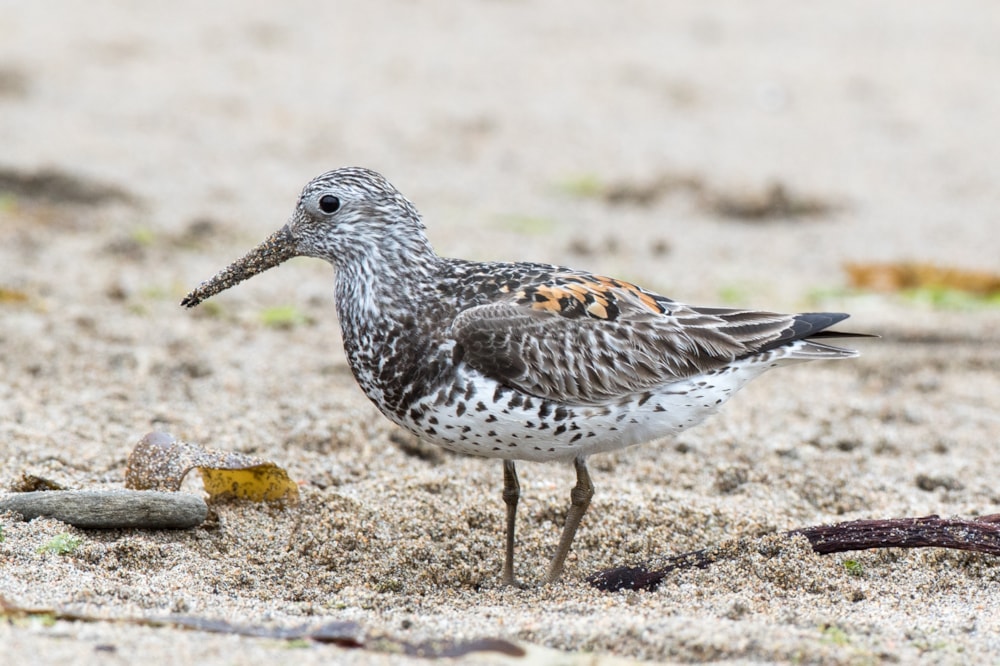
This individual is the first Great Knot to be discovered in Britain in May, with the others being found in June, July (two), August, September and October (Mick Kemp).
A tense few minutes followed, during which time neither of us dare move or even breath for fear of flushing it. After a while the bird settled down, started to feed actively and looked comfortable with us being there. Dave and I slowly walked towards each other and in whispered tones we swore. After a little bit of self-congratulatory back slapping and hand shaking, we put the news out.
First to arrive was Dave ‘super’ Cooper, followed by Brydon Thomason, both of whom were gracious enough to offer their congratulations. As the day continued so the crowd grew larger (for Unst) and it was a slightly surreal experience watching so many people come for our special find. Even my wife, who’d arrived mid-week, drove up to join in with the excitement. The bird continued to feed actively for the rest of my stay and proved quite tame.
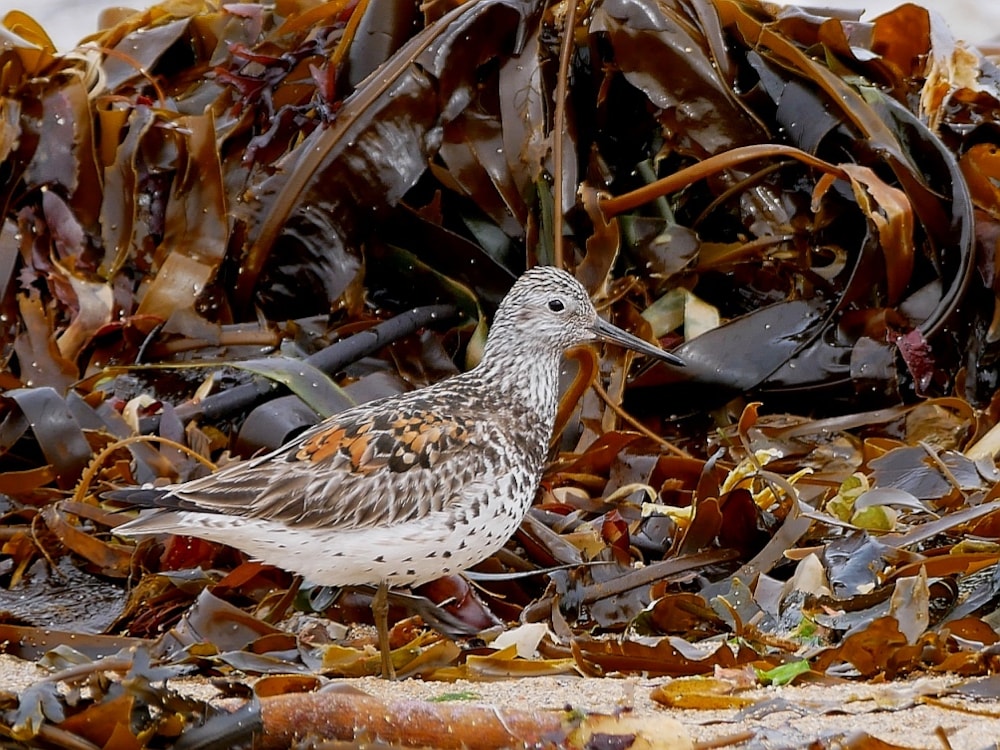
Shortly after landing on Skaw beach, the wader settled down and started to feed actively (Allan Conlin).
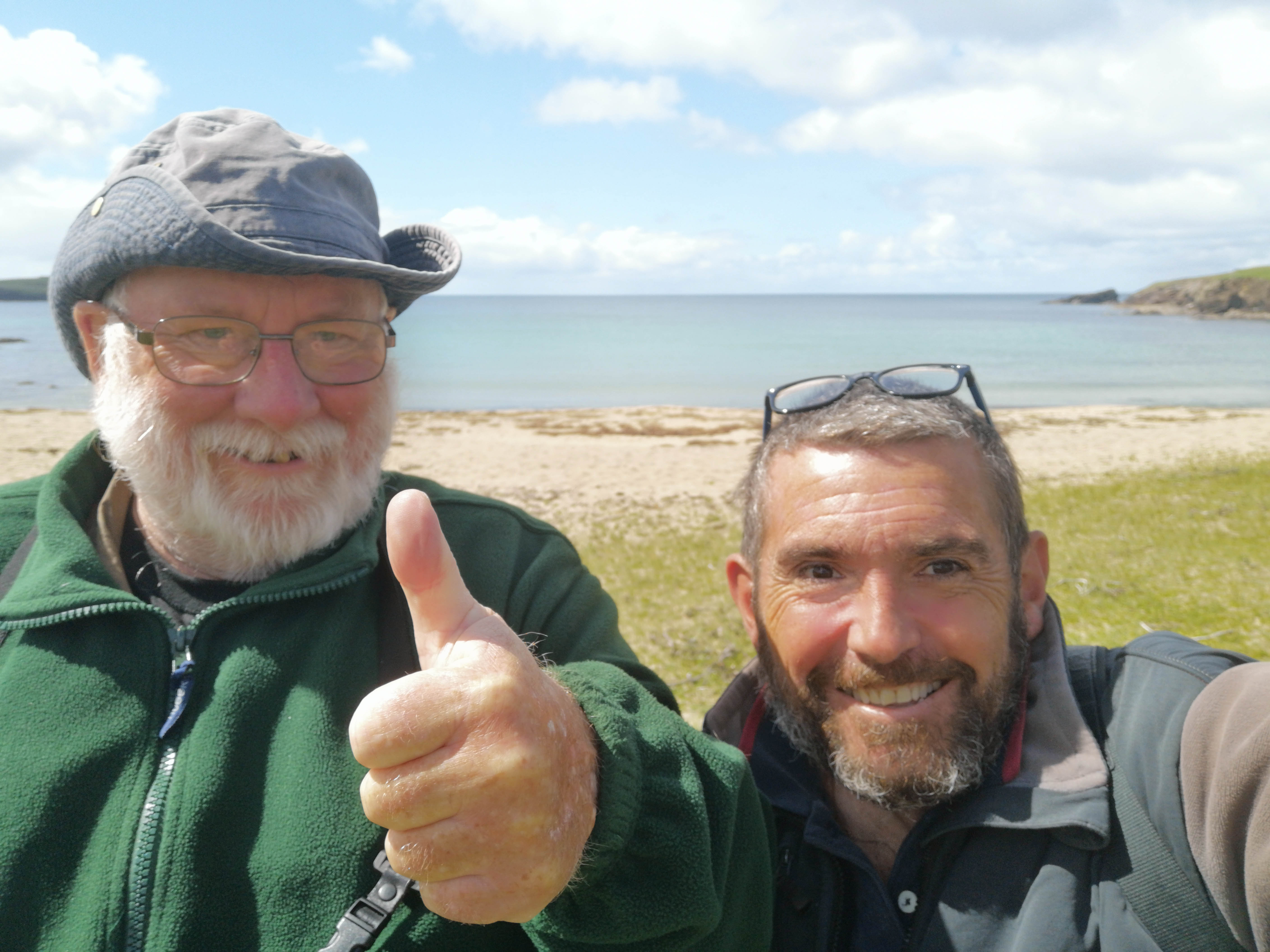
Allan (right) and friend David celebrate their mega discovery (Allan Conlin).
While writing this piece I was reminded that, in addition to a little bit of luck, positivity and persistence will win the day. Our Great Knot was the sixth UK record, beating my previous best of national ninth. That too was a wader, so hopefully I’m heading in the right direction for a British first – I’m not a betting man but, if I were, I’d put my money on a Wirral Willet!
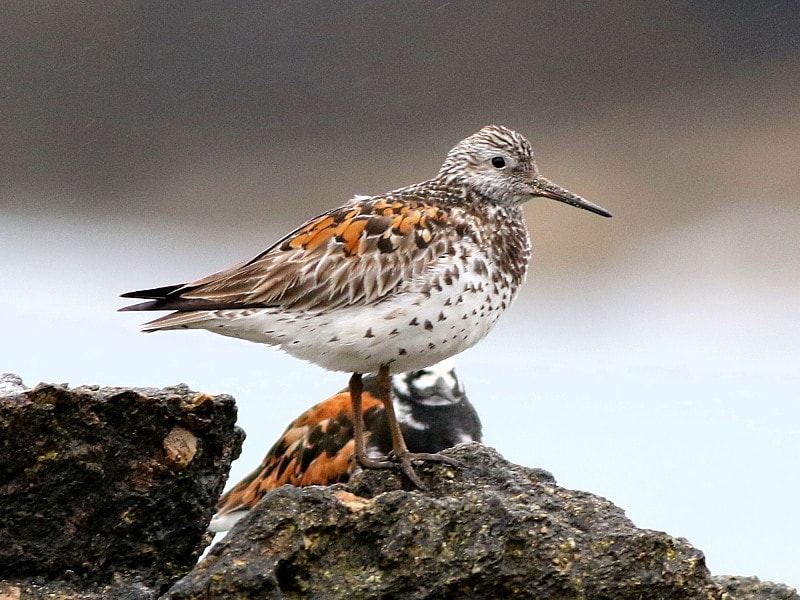
No comments:
Post a Comment